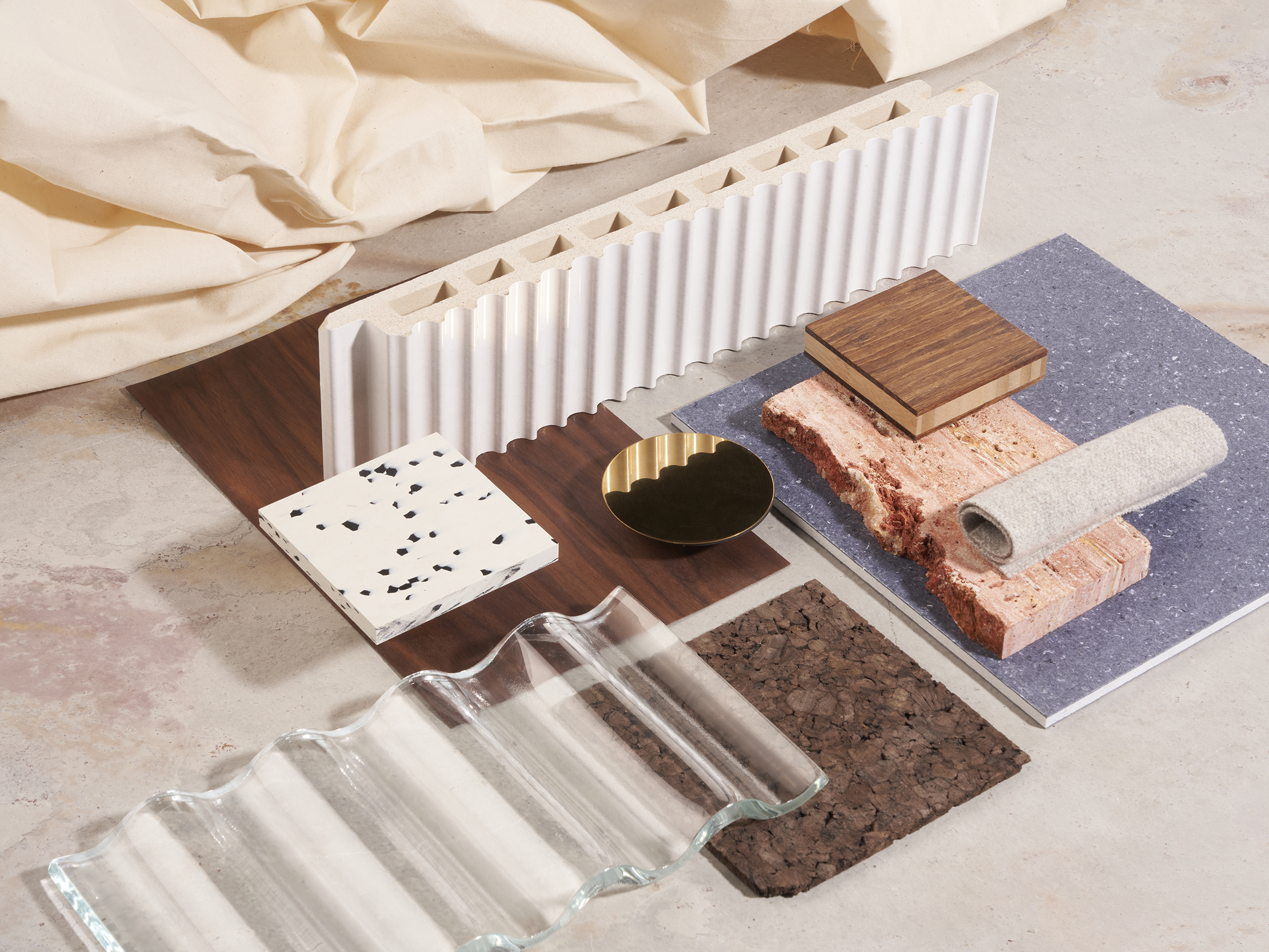"The greatest threat to our planet is the belief that someone else will save it."
– Robert Swan
Facts & figures
40% of Europe’s total energy consumption can be traced back to the construction and architecture industry. As well as 50% of electricity consumption, 36% of CO2 emission and 13% of drinkable water consumption. The numbers aren't pretty. But as designers, we are in a position to make a real change. Even more so, it's our responsibility.
A designer’s responsibility
We are involved in the early stages of creation and production. The potential impact of our choices is huge. Always be aware of this.
To make those choices more consciously, it’s our job to understand the complexity of sustainable development.
Developing in a sustainable way isn’t limiting. Inspire others to see it as an opportunity to innovate.
Set the bar for future partnerships on both sides. Challenge clients and suppliers.
Sustainable development
Sustainable development is about meeting the needs of the present, without compromising the ability of future generations to meet their own needs. This isn’t just a matter of sustainable resources. The environment, as well as society and the economy, weigh in on the matter.
Sustainable development is a complex matter. As a design studio it's our responsibility to understand every aspect of it, but for individual designers it might be too big of a stretch.
So let’s make it visual & designer proof
We believe designers should be able to make choices based on their strong, aesthetic eye without having to spend all of their time researching and analyzing how sustainable a material or supplier really is.
So, we needed a simple, workable interface for a complex system. And that’s what we created. An easy-to-use, designer proof classification system for our material library.
The materials and brands are sorted using a simple colour code - green, orange and red - which visualises their environmental impact, making it easier for designers to make a sustainable choice.

Our way of working
The colour-coded classification system is based on a comprehensive study of two key components. Materials on the one hand, the brands creating and supplying those materials on the other. We evaluated both and granted points according to their environmental impact and involvements in terms of sustainability. This resulted in two separate classifications. Afterwards, both systems weighed in to determine the place of a material on a green, orange or red coloured shelve in our sample library. The result? A simple colour code to point out the environmental impact of the material and the sustainability involvement of a brand
But the work isn’t done
The study and system are a constant work in progress. We’re calling on all designers, studios and experts across all disciplines to share your thoughts and further build on our work.
Download our study and join the conversation
Our commitment
Fully understand the subject of sustainability and make it designer friendly and usable.
Validate suppliers’ efforts and clients into sustainability
Spend 3% of our revenue on internal sustainability research on top of our efforts for charity and employee wellbeing.
Share our findings, results and knowledge with the industry.

WeWantMore is an active member of The Shift, the Belgian sustainability network aiming to realise the transition towards a more sustainable society and economy.




